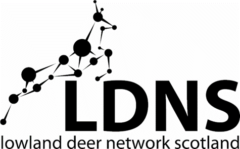The Clerk of The Rural Affairs and Islands Committee,
Holyrood Parliament,
Edinburgh.
Dear Madam / Sir,
Natural Environment Bill.
Deer Working Group Recommendations,
Lowland deer and their management.
The Deer Working Group made many recommendations in 2020, mostly about the management of upland deer, notably the Red deer species, at much the same time the notion that there are 1,000,000 deer in Scotland was promulgated.
As the recently retired Director in Scotland of the British Deer Society, of some 18 years’ service, and a member of the Science & Research Committee there-of, which I also chaired, I must inform you that this number is an educated guess and that there is no peer reviewed research to support this assertion, it’s a bit of a myth, we simply don’t know how many there are before the culls start of after the newborn arrive, potentially 100,000 one way or 100,000 the other way.
Since the DWG report and recommendations were published, much water has spilled over the waterfall and much has changed. The Association of Deer Management Groups & Nature Scot have managed to influence the majority of Deer Management Group members considerably and the deer cull has been increased generally, and specifically where negative impacts were most noticeable. The proposed further increase in the cull may prove to have been unnecessary in some places, as most goals have been achieved.
During the same period the spotlight of interest has supposedly been turned onto the lowlands, where NatureScot employs a single deer officer, (whereas there are 9 or more deer officers in the Highlands), several Local Authorities will not manage deer, (even on Priority Sites in their remit), roe deer multiply at 200%, (400% more than red deer), the majority of deer controllers are private skilled volunteers operating at their own expense, often in quite a hostile environment with many safety problems to contend with. The final issue that they have to contend with is the low price that the venison achieves when sold to a Venison Dealer, typically £1.50/kg for an adult roe deer of 16kg, is £24 only. The lowland skilled volunteers bear the cost of deer management.
It is noticeable that the questions being raised by the Rural Affairs and Islands committee members are generated by the Natural Environment Bill, often generated by the recommendations of the Deer Working Group, which was focused on red deer, but these are interspersed with newer topics taken from current affairs, sometimes about roe deer in lowland scenarios.
Lowland Deer Network Scotland has been under new management for 18 months as its former body collapsed during Covid, I have been busy since then rebuilding the social / stakeholder network and attempting to assist in the quest to facilitate the increased cull suggested.
In the lowlands where skilled volunteers are doing their best to achieve the culls suggested by their landlords, at their own expense, without any incentives, they typically have personal limitations on their time and budget and also in their capacity to transform the deer that they shoot into venison suitable for commercial release.
Sensing this problem, I undertook a survey of all known persons and organisation in our mailing list and also through the NGO’s and received interest from 125 respondents who declared whether or not they needed a new competent chiller unit, 70 responded affirmatively, 4 were incompetent, but 60 wanted personal chillers and 6 were contemplating larger scale collaborative chills or commercial intake for commercial processing.
Funds, (£85,000 net of administration costs), were made available by NatureScot to award 50% capital grants to appropriate and competent applicants, we have just reviewed the appointment schedule for 15 likely successful applicants. While this may seem a very small project it has enabled research and gathering of information and will hopefully lead to an extension of the project next year.
There are many aspects of deer and human behaviors which we blend to achieve desired aims and I would be pleased to make myself available to you as senior representative to discuss or consider any issues that you foresee or want to be informed about, as an active farmer and deer manager involved in the training of deer managers I am quite well informed, but not in Parliament as often as I used to be.
I have been involved with SNH for many years, if not decades, I was employed by SNH as one of the four people employed to act as an advisory committee when DCS converted into SNH and have assisted on Committees such as:
The Competence Review committee, of which I was vice chair.
The Wild Deer Best Practice Working Group, which I have assisted on for 20 years.
I chair the PAW, Partnership for Action against Wildlife crimes Poaching & Coursing Priority Group and I advise the Legal team for PAW.
I have recently joined the Scottish Quality Wild Venison Committee as well as the Technical Advisory Group thereof.
I thought it appropriate to introduce myself as many topics and questions are now emanating from interest in my remit, as opposed to the hills and red deer sector.
Regards,
John Bruce.
John Bruce, Chair of Lowland Deer Network Scotland,
